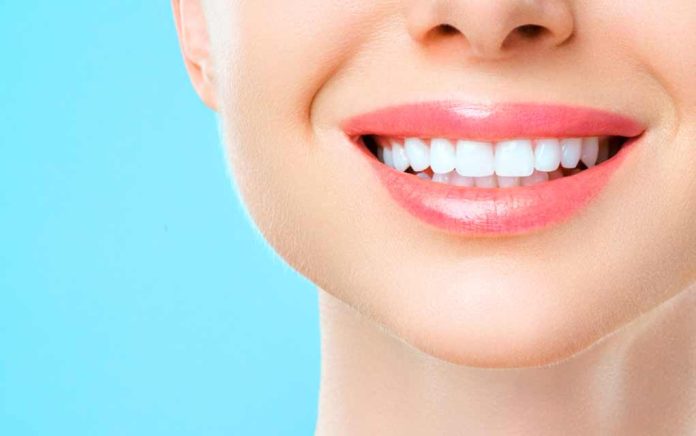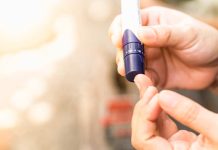
(HealthyResearch.com) – Your smile might be one of the first things people notice about you. Many of us drink tea or coffee that tends to stain our teeth, and paying for whitening treatments can become expensive. Whitening your teeth at home can save money, and might be a way to avoid using chemical whiteners. Learn about these five ways to whiten your teeth at home and how effective they might be.
1. Brush With Baking Soda
Due to the texture of baking soda, as well its tendency to break down acids, brushing with it often may help whiten teeth. Research shows that using a toothpaste with baking soda as an ingredient is effective in removing stains like coffee, tea and soda from teeth. It works as both an abrasive and chemically.
Because it’s abrasive, limit brushing with baking soda to once a week to keep from wearing down enamel, and don’t use baking soda if you wear braces or have a permanent retainer. By itself, baking soda does not kill germs that might cause cavities, so following by brushing with toothpaste or by rinsing with a mouthwash that kills bacteria is recommended.
2. Be Sure To Get Calcium
Calcium helps keep the enamel from eroding, and a lack of calcium may cause teeth to yellow over time. Healthy enamel is what allows our teeth to be pearly white, and adequate calcium can aid in that process. Consume foods rich in calcium, such as dark leafy greens, milk, broccoli and cheese, regularly. Healthy teeth will naturally be whiter and brighter.
3. Use Oil Pulling
Some studies show oil pulling to be as effective as mouthwash in reducing plaque and bad breath. It might also potentially whiten teeth, as a result. To utilize this method, simply swish a small amount of any cooking oil in the mouth for a prolonged period. Traditional choices include sesame oil, sunflower oil, or palm oil because oil pulling started in India.
Coconut oil is a popular choice because of its pleasant taste and because of the lauric acid content, which may help reduce inflammation and kill bacteria. Times vary, but people pull oil for as little as 5 minutes or up to 20 before discarding the used oil into the trash or down the sink. Many people use oil pulling daily.
4. Rinse With Apple Cider Vinegar
Apple cider vinegar (AVC) is mostly acetic acid, which kills some bacteria, according to research. It may also be helpful in whitening the teeth. Acetic acid can be harsh to enamel and can soften teeth if used often or undiluted. Mix AVC with water before simply rinsing as you would with a mouthwash. Limit your use of this whitening strategy to a couple times per week to safeguard your enamel.
5. Brush and Floss
Brushing and flossing regularly is the primary method that most of us rely on every day to keep our teeth bright and to keep cavities at bay. The other methods may supplement brushing and flossing and might add some brilliance to our smiles. Brushing and flossing are the workhorses that remove the majority of bacteria and plaque that might stain our teeth.
A solid oral hygiene care plan that includes several proven methods in consultation with your dentist can go a long way to keeping smiles selfie-ready. Ask your dental professional about these five methods on your next visit for the best results.
~Here’s to Your Health & Safety!
Copyright 2021, HealthyResearch.com
















